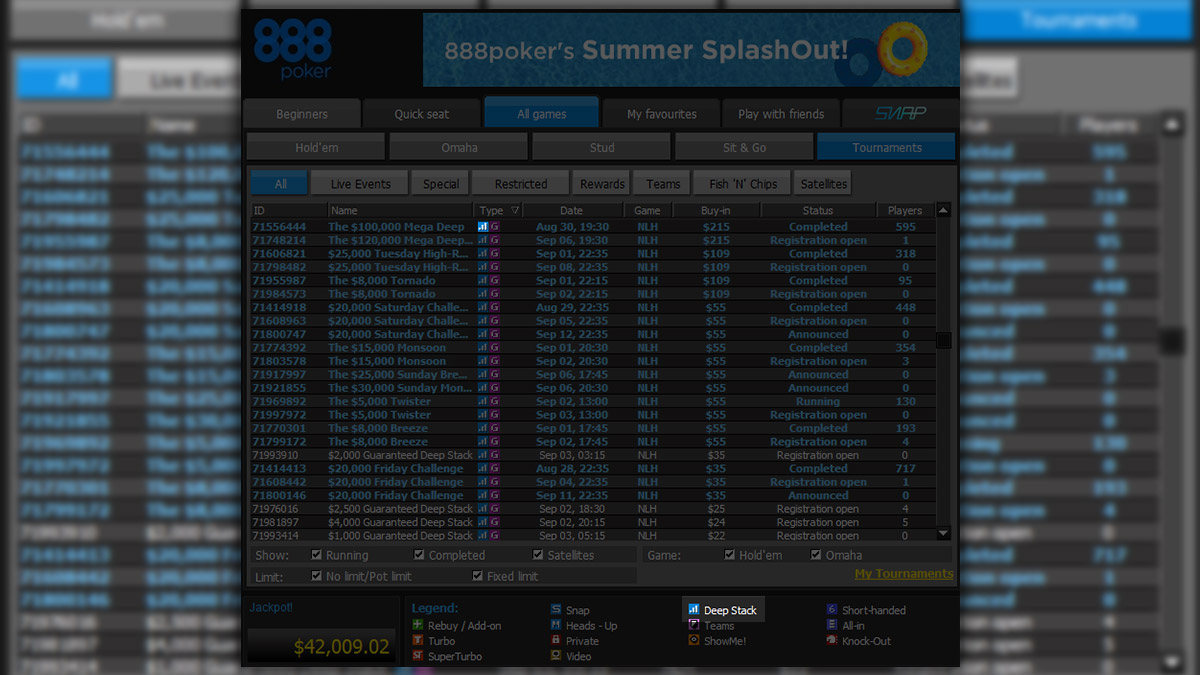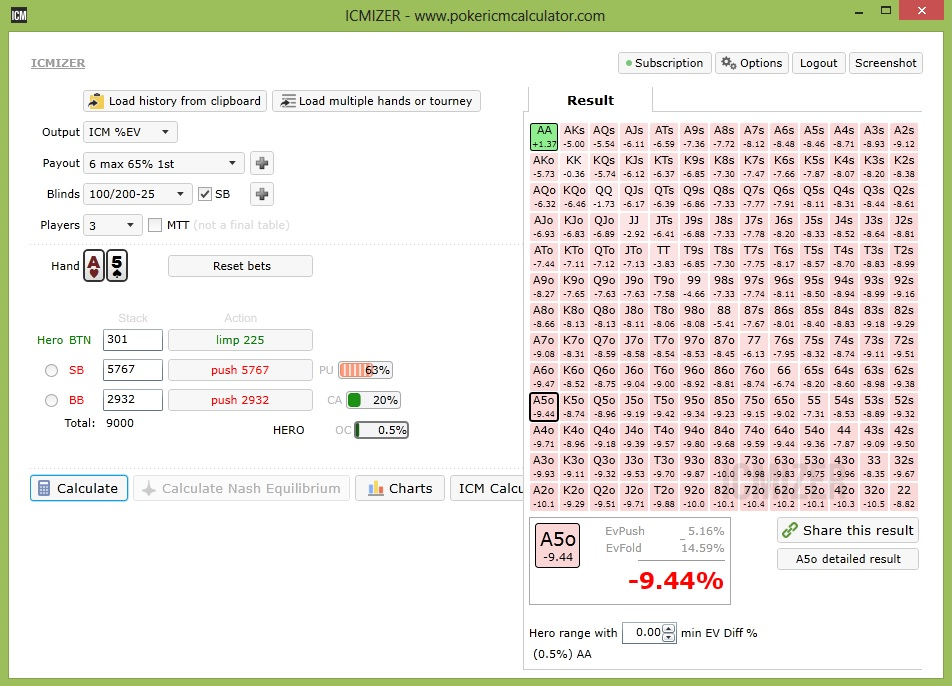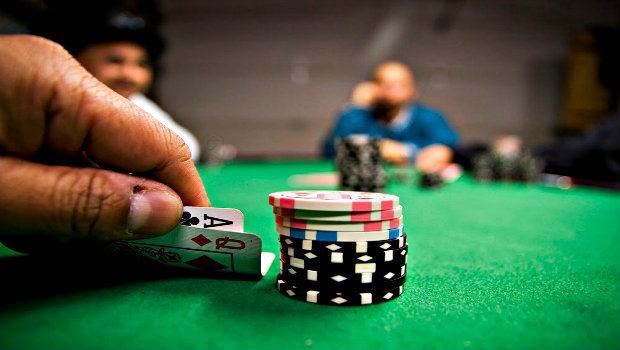Short Stack Poker Tournament Strategy
You’re probably going to be short-stacked in every poker tournament you play, which makes short-stacked skills a must for every player to acquire. The first, and most obvious concept about playing a short stack is that it requires patience and discipline to wait for the right situation in order to try to double through an opponent and get back in the poker tournament.
- Short Stack Poker Tournament Strategy List
- Mtt Poker Tournament Strategy
- Poker Tournament Strategy Pdf
- Short Stack Poker Tournament Strategy Tactics
Although many poker authors advise against it, buying for a minimum and starting with a small stack can be advantageous in ring games. Most poker experts, authors, and professional players will tell you how preferable it is to buy into a no-limit cash game with the maximum possible buy-in. While there are several benefits to having a large stack in a ring game such as intimidation, comfort. Poker Strategy with Short Stack Basics of Short Stack Play. Three basic principles apply to short stack tournament strategy. Your position, reputation, and hand quality are most important. Short stack poker is about moving all-in at the right time. Because you have so little chips it’s really important to. Play Short Stack Poker Like a Pro. As tournament players, we constantly find ourselves in situations where we have to play short stack poker.For the purpose of this article, I will define a short.
Playing a short stack in poker is one of the most fun things you can ever do in Texas Hold’em. I have been a short and mid stack pro for almost 10 years and have beat as high as 600NL. In this article, I will cover the meaning of short stacking strategy for both cash games and tournaments.
Assessing the Situation
When you find your stack shrinking, the first thing you need to do is to assess the situation by gathering a few facts that will put your short stack into some perspective. Just answer these few questions:
- How big is your chip stack compared to others at your table?
- How big is your chip stack compared to the size of the blinds?
- How big is your chip stack compared to the average stack?
- How many hands can you look at before you bleed to death or else have so few chips in hand that even when you do go all-in, you’re bound to be called by someone?
Consider yourself short stacked whenever you have between 10 and 20 big blinds in front of you. When you have fewer than 10 big blinds, you have no option to make plays except for folding or pushing all-in. You shouldn’t call, and shouldn’t expect that any tricky plays on your part will succeed. Your options are only two: Fold or push.
Once you have more than 20 big blinds in front of you, you have some risk-taking latitude. It’s not quite enough to play your normal tournament game, but you’re not in imminent danger.
The Shorter Your Stack, the More it Costs
As your stack gets shorter, each bet, call, or raise you make takes an increasingly larger portion of your entire tournament equity. You really can’t play drawing hands because the cost of drawing and failing is too high. As your stack gets shorter, you need to look for opportunities to move all-in. But you can’t let things get too desperate. An all-in bet with just a few chips won’t threaten anyone. An all-in bet with 15 or 20 times the big blinds is still a threat to an opponent, while an all-in move with only three times the big blinds in hand won’t scare anyone.
You Can’t Wait for a Premium Pair
When you’re short stacked, you really don’t have the latitude to wait for a big premium pair, although if you are fortunate enough to be dealt a big pocket pair, you should have no qualms about pushing all-in with them. But you also have to think about pushing with any pocket pair, A-K, A-Q, A-J, A-T, and even weaker hands, such as Ace-anything, K-Q, K-J, K-T, K-9, Q-10+, or even J-10 if you have position and a number of players have folded before it’s your turn to act.
In fact, if you’re at a fairly tight table, you can consider pushing with any two cards as long as no one has entered the pot before you, and you’re in late position. Obviously, the larger your stack, the better your chances are of succeeding.
You Have to Double Up
One of the drawbacks to being short stacked is that your opponents are all aware of your situation, and are more willing to call-in order to knock you out. This is particularly true when you’ve reached the pay ladder of a poker tournament and each player eliminated guarantees those surviving a higher pay-out.
There’s not much you can do about that; your short stack has precluded much of the maneuvering room you’d have if you owned more chips. You have to double up. Nothing else matters as much at this point in your tournament.
Forget About Protecting Your Chips
Short Stack Poker Tournament Strategy List


Good short stacked play breaks many of the rules of tournament poker. In a sense, your short stacked style is diametrically opposed to what you’ve learned about tournament poker. All tournament players know how important it is to protect their chips. But when you’re short stacked, you really don’t want to protect them. You want to find a good situation – that’s critical – to gamble for all your chips in an effort to get back into contention.
You have to get your chips in the middle of the table and hope for the best. Finding a good situation means you have to be first into the pot if that’s possible. Being first in means your opponents are faced with a decision to call or fold. If you are not first into the pot and come in calling – or even raising for all your chips – you have less chance of winning the pot without having to show down the best hand.
A limper in front of you might be someone with a premium hand who’s hoping another player raises so he can come over the top. If there’s a raiser in the pot before you act, you need a very strong hand to re-raise for all your chips. Without a big holding you have to release any of those marginal poker hands you were hoping to play unless, of course, you are so short stacked that you have no other option.
Short Stacked Play is Simplified Poker
Bluffing, calling and floating, and other sophisticated poker plays are predicated on an ability to make creative moves based on your read of your opponent and not necessarily on the strength or potential of your hand. While creative plays have their place at the poker table, just forget about them when you’re short stacked because you’re in a position where the cost of trying a sophisticated play and failing is something you can no longer afford.
As opposed to making big bets on the turn and river, as you’d be prone to with an average sized stack or larger, when you’re short stacked most of your action will take place before the flop or on it. In essence, when you’re short stacked, the last thing you want to do is play a hand to the showdown. You want to bet – and win – early.
Implied Odds Are Not Important
With a short stack, the concept of implied odds also goes out the window. You simply don’t have enough chips to win a large pot on a later betting round. If all you have are 10 or 15 times the big blind, you won’t win any big pots, because you don’t have enough chips to play anything but a smallish, all-in pot.
Playing mid-range and smallish suited connectors, and set-mining with small pairs are also strategies you can toss out of your toolbox when short stacked. They come with a cost and the chance of succeeding with hands like these are small.
Short stacked play means you need to get your money all-in with a big pair or big connectors and hope to win by making top pair with a strong kicker.
Don’t Limp-in if You’re Short Stacked
If you are a short stack, you’ll need to avoid the temptation to limp-in and hope to catch part of the flop inexpensively. If you’re down to 10 big blinds or fewer, you need to go all-in if you play a hand. With 15 or more big blinds, you can afford to make your usual raise . If you have between 10 and 15 big blinds, you’re in the judgment zone and will have to decide whether to go all-in or make a standard raise.
It may seem like a good idea to limp-in and try to catch a good flop inexpensively, but it is more profitable to raise and build the pot with a strong starting hand.
Be Selective; Be Aggressive
If you haven’t gone all-in on the flop, once the flop is exposed you will have a choice to make: push or fold. That’s it. No other options. It’s all or nothing when you see the flop short stacked.
If it looks as if someone else will bet if you check, you are usually better off being the aggressor instead of the caller. If you come out betting, your opponent might fold. If he bets and you call all-in, then you’ve relegated yourself to having to win at the showdown, if you are to win at all.
Conclusion
Mtt Poker Tournament Strategy
Here are the three main things to keep in mind when you’re short stacked in a poker tournament:
- Don’t speculate
- Commit while you still have enough chips
- Be first into the pot
You can’t play a small pocket pair in hopes of flopping a set, and you can’t play mid-range suited connectors when you’re a short stack because the odds against hitting your hand are long. Even when you do get lucky, you’re so short stacked that the amount you can win is reduced. Moreover, you can’t take the risk of calling only to have to release your hand if the flop misses you. Be sure the short stacked hands you play are those you’re willing to go to the mat with. You don’t have enough chips to play hit-to-win poker. Go all the way or don’t go at all.
If you are really close to the felt, you have to commit to a hand – and it might just be any hand – while you still have enough chips to convince opponents that folding is in their best interest (also known as fold equity). If you have just a few chips left, you’re going to have to win at the showdown to win at all. There’s a difference between playing with a short stack and playing with barely any chips at all.
Before pushing all-in as a short stack, be sure you’re first into the pot or you have very good cards. If you have 10 big blinds, you still have enough chips to threaten opponents and they will still need a decent hand to call. But if you are not first into the pot, you need a big hand to play because you will probably have to go to the river to win.

Related Lessons
By Lou Krieger
Poker Tournament Strategy Pdf
The author of many best-selling poker books, including “Hold’em Excellence” and “Poker for Dummies”. A true ambassador of the game and one of poker’s greatest ever teachers.